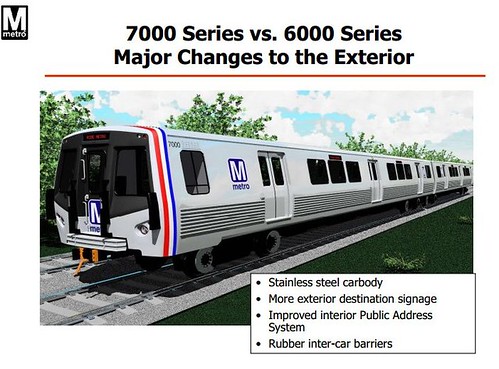Today's Washington Post Dr. Gridlock column, "Metro rider: Moving people is what really matters," (apparently not online) is a bit aggravating because Dudley Schwartz of Rockville thinks he has the answer, subway car dwell time all figured out--that the train operators should wait for everyone to get on the train--not just the 25 to 35 seconds that is allocated--because he believes that the point of the system is moving everybody waiting, not moving the system along.The reality is that it's a balance, a constant "satisficing"--satisficing is a public administration term combining satisfy and suffice. And plenty of riders are in fact concerned with time efficient travel, and expect other riders to be conscious of this and not meander, but get off and on quickly.
There are two reasons why the dwell time can be inadequate:
- passengers getting off and on the cars don't do it very efficiently
- the train cars aren't configured in a fashion to speed up getting off and getting on the train.
Both are problems in the WMATA system.
With regard to users, part of the issue is how the cars are set up with a bunch of bars in the entryways and some people just standing around. Given the difficulty of "fixing" people's behavior, especially given that a great number of people using the system on the daily basis are visitors, with a general lack of experience riding transit of any kind, at key transfer stations, problems will always occur, especially at key transfer points like Union Station (transfer from MARC, VRE, and Amtrak trains), Gallery Place (especially because of the station's poor design), and Metro Center.
To speed up throughput, I have continually suggested four door trains, as a mechanical fix or at least a "kludge."
More doors means more points for entry/exit.
(I wish we could also rebuild Gallery Place with deeper platforms and a non-offsetting placement of the red line platform with regard to the green/yellow line platform (which is also too narrow) And make the platforms deeper at Metro Center too... but neither will happen in our lifetimes.
One more entrance/exit, and combined with other configuration changes within the cars (it would reduce the number of seats, but is always controversial because the WMATA system acts as "commuter rail" for the far out parts of the region, while functioning more like a traditional subway system at the core, where people making shorter trips are willing to stand), would allow for quicker entrance and exit.
This ought to be done especially considering that in the next decade, capacity is supposed to be reached.
So the biggest opportunity to speed throughput is lost for a generation--since the cars are likely to be in service for upwards of 30 years...
Labels: transit, transit design and engineering, transportation infrastructure




0 Comments:
Post a Comment
<< Home